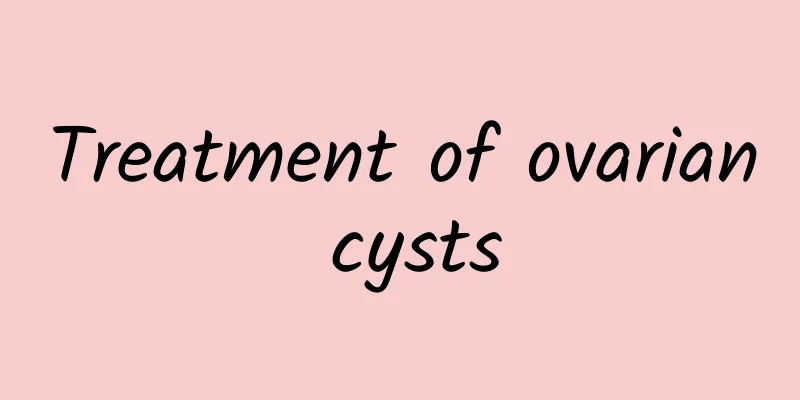Treatment of ovarian cysts

|
Ovarian cyst is a cystic structure formed inside the ovary or on its surface. Its treatment method should be determined based on the patient's actual situation. Commonly used treatment methods include general treatment, drug therapy, physical therapy, surgical treatment, and other treatments. 1. General treatment: For physiological ovarian cysts, if there are no physical discomfort symptoms and the cyst is small, you can observe it regularly to understand its changes. Maintain good living habits on a daily basis, such as going to bed early and getting up early, and avoid staying up late. Pay attention to personal hygiene, keep the private parts clean, and avoid gynecological diseases. 2. Drug treatment: For inflammatory ovarian cysts, you can generally follow the doctor's advice to seek antibiotic treatment, such as metronidazole tablets, cefixime dispersible tablets, etc. In some cases, such as endometriosis cysts, in order to prevent cyst recurrence or delay cyst growth, you can follow the doctor's advice to use hormone therapy, such as dydrogesterone tablets, medroxyprogesterone acetate tablets, etc. 3. Physical therapy: You can use a hot towel or hot water bottle to apply heat to the abdomen to promote local blood circulation and help alleviate the symptoms of ovarian cysts. Usually it can only be used as an auxiliary means and cannot replace the main treatment method. 4. Surgical treatment: For patients with larger cysts and obvious symptoms, they can cooperate with doctors to undergo surgery. Commonly used surgical methods include ovarian cystectomy, oophorectomy, and total hysterectomy. 5. Other treatments: For patients with malignant ovarian cysts, radiotherapy, chemotherapy and other treatments may be needed after surgery to inhibit and kill residual cancer cells and improve the patient's prognosis. Note: The use of drugs must be in accordance with the doctor's advice. Do not take drugs without authorization to avoid adverse effects. During the treatment, you should maintain a good attitude and avoid anxiety and tension. Regular review and follow-up should be conducted after treatment to understand the changes in the condition and the treatment effect. If you have any discomfort, you should seek medical attention in time. |
<<: What to do if there is excessive pelvic effusion and leucorrhea
>>: How to treat threatened abortion
Recommend
Patients should be careful about the precautions after uterine fibroid surgery
Nowadays, people will take timely treatment after...
Cupping treatment for patients with kidney deficiency type menstrual disorders
Kidney deficiency type menstrual disorders are ma...
Experts introduce common misunderstandings in the treatment of uterine fibroids
Many female friends feel panicked when they hear ...
What is the cause of vulvar leukoplakia?
Many female friends who suffer from vulvar leukop...
How to treat cervical erosion, 5 methods of clinical treatment of cervical erosion
When we suffer from a disease, we need to take tr...
The Purdue offerings have undergone a transformation: Canned instant noodles are also nutritious
The abundant offerings after the Zhongyuan Festiv...
Bad habits in life can lead to vaginitis
Vaginitis is a major disease that many women suff...
What is the location of the uterine fibroids and what does the uterine fibroids mean?
What is the location of the uterine fundus wall o...
What is the difference between bleeding and menstrual blood?
Menstrual blood refers to menstrual blood. The di...
Experts explain basic treatment methods for chronic cervicitis
Chronic cervicitis is a gynecological disease tha...
How to screen for uterine fibroid cancer? What tests should be done to screen for uterine fibroid cancer?
How to screen for uterine fibroid cancer? What te...
Can I have an IUD if I have chronic pelvic inflammatory disease?
Can I have an IUD if I have chronic pelvic inflam...
Two prescriptions for endometriosis
Two prescriptions for endometriosis Endometriosis...
Can menopause be cured?
Menopausal treatment must be persisted for a long...
Detoxifying with fruits and vegetables helps you lose weight! 3-day high-fiber fruit and vegetable detox meal, stop and listen before trying
Vegetables and fruits are essential foods for the...









